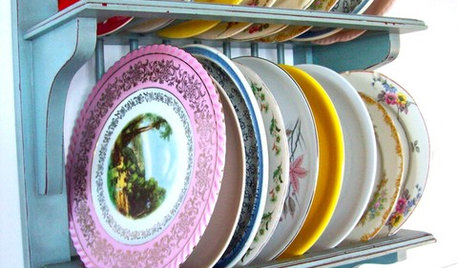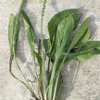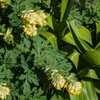Ever forget where you planted things?
mxk3 z5b_MI
10 years ago
Related Stories

HOUSEKEEPING20 Things You Might Be Forgetting to Spring-Clean
Clean these often-neglected areas and your house will look and feel better
Full Story
ACCESSORIESWhy You Should Forget About the Usual Coffee Table
Think in smaller multiples for a stylish and functional alternative to that monster table in the middle of the room
Full Story
MOST POPULAROrganizing? Don’t Forget the Essential First Step
Simplify the process of getting your home in order by taking it one step at a time. Here’s how to get on the right path
Full Story
REMODELING GUIDESWhere to Splurge, Where to Save in Your Remodel
Learn how to balance your budget and set priorities to get the home features you want with the least compromise
Full Story
EXTERIORSWhere Front Yards Collide: Property Lines in Pictures
Some could be twins; others channel the Odd Couple. You may never look at property boundaries the same way again
Full Story
FALL GARDENINGMake This Fall’s Garden the Best Ever
Learn the most important tip for preventing buyer’s remorse, plus get more valuable buying and planting advice
Full Story
COLORWhere to Find Home Color Inspiration
Look for paint color ideas in things you already love: a piece of art, a cozy café, a vintage plate — even a memory
Full Story
LIFEHouzz Call: Where (and What) Are You Reading This Summer?
Whether you favor contemporary, classic or beach reads, do the long and lazy days of summer bring out the lit lover in you?
Full Story
HOMES AROUND THE WORLDWorld of Design: 11 Book Lovers and Where They Like to Read
Bibliophiles across the globe reveal their top books and favorite reading spots, from a 2-story library to an artfully curated book nook
Full Story
KITCHEN DESIGNWhere Should You Put the Kitchen Sink?
Facing a window or your guests? In a corner or near the dishwasher? Here’s how to find the right location for your sink
Full StoryMore Discussions










rouge21_gw (CDN Z5b/6a)
christinmk z5b eastern WA
Related Professionals
Franconia Landscape Architects & Landscape Designers · Glassmanor Landscape Architects & Landscape Designers · Walnut Landscape Architects & Landscape Designers · Brooklyn Center Landscape Architects & Landscape Designers · Peabody Landscape Contractors · Waterbury Landscape Contractors · Berkeley Heights Landscape Contractors · Conroe Landscape Contractors · East Haven Landscape Contractors · Haverhill Landscape Contractors · Pacifica Landscape Contractors · Pompano Beach Landscape Contractors · Selden Landscape Contractors · Watertown Landscape Contractors · Ferguson Landscape Contractorsmxk3 z5b_MIOriginal Author
mnwsgal
sunnyborders
User
gyr_falcon
dbarron
paleogardener
katob Z6ish, NE Pa
monarda_gw
sunnyborders
david883
sunnyborders